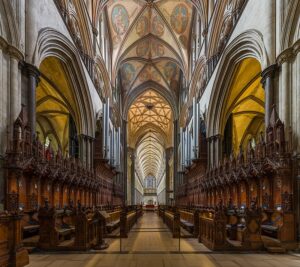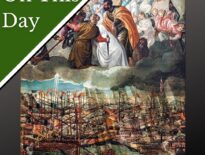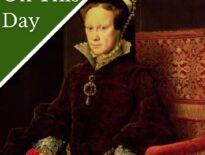Capon appeared to have reformist leanings in the reigns of Henry VIII and Edward VI, but became a conservative Catholic again in Mary I's reign, and was involved in the examination of those deemed to be heretics.
Here are some facts about John Capon:
- It is thought that Capon probably came from Salcot in Essex. His birthdate and background are unknown.
- He was ordained deacon at St John's Abbey, Colchester, as a Benedictine monk in 1502.
- He graduated with a BTh (1512) and DTh (1515) from Cambridge University.
- By 1517, Capon had become prior of St John's Abbey.
- His brother William served Cardinal Thomas Wolsey as his chaplain so Capon knew Wolsey and also got to know Thomas Cromwell.
- In 1517, Capon became abbot of St Benet of Hulme in Norfolk.
- He preached at Henry VIII's court.
- In 1530, Capon took Henry VIII's side when he and twenty-eight others were chosen to act on behalf of Cambridge University and make a pronouncement on Henry VIII's marriage to Catherine of Aragon.
- In 1530, he became abbot of Hyde Abbey in Winchester.
- In 1533, Capon became Bishop of Bangor. It is thought that his appointment was due to the favour of Queen Anne Boleyn. He never actually resided there.
- In November 1533, when Elizabeth Barton, the Holy Maid of Kent, and her followers did penance at Paul's Cross, Capon was chosen to preach there.
- He preached again at Paul's Cross in 1536.
- In July 1539, Capon was elected Bishop of Salisbury.
- In Henry VIII's reign and that of Henry's son, Edward VI, Capon seemed to support reform. He was part of a project revising the Great Bible in 1542 and seemed to be in support of the 1549 Act of Uniformity. However, when Mary I came to the throne, he embraced Catholicism.
- In his diocese of Salisbury, six people were executed for heresy during Mary I's reign and 73 clergymen were deprived of their livings, probably due to them having married.
- The 1555 heresy burning victims Rowland Taylor, John Bradford and Laurence Saunders were tried by a commission on which Capon sat. Capon and his chancellor, William Geffrey also examined Protestants John Maundrel, William Coberley and John Spicer who were burnt in March 1556.
- Capon died on this day in 1557.
Also on this day in Tudor history...
Image: Salisbury Cathedral Choir, photo by Diliff, Wikimedia Commons.
Notes and Sources
- Louisa, A. (2009, May 21). Capon [Salcot], John (d. 1557), bishop of Salisbury. Oxford Dictionary of National Biography, https://www.oxforddnb.com/view/10.1093/ref:odnb/9780198614128.001.0001/odnb-9780198614128-e-4592.




Leave a Reply